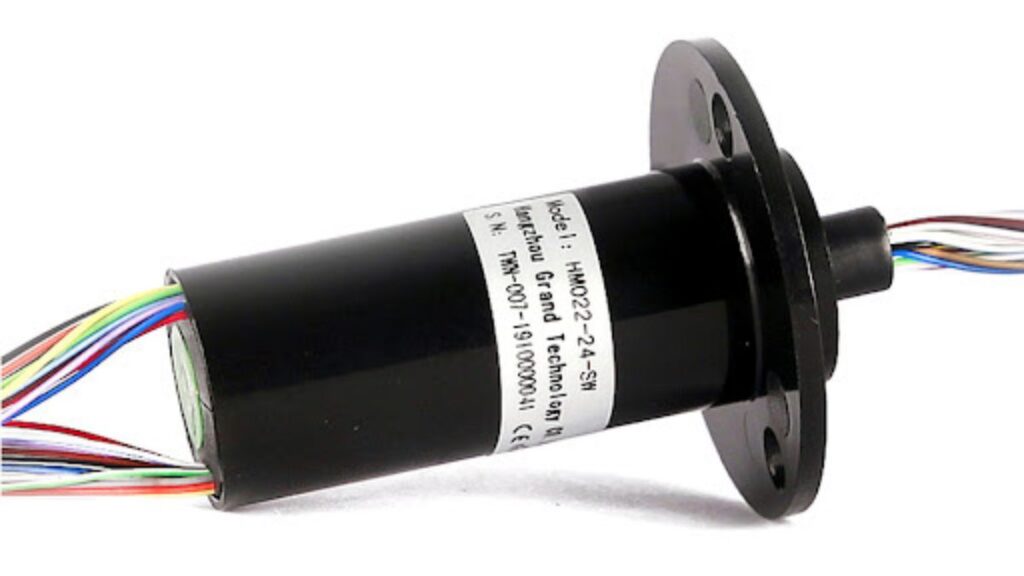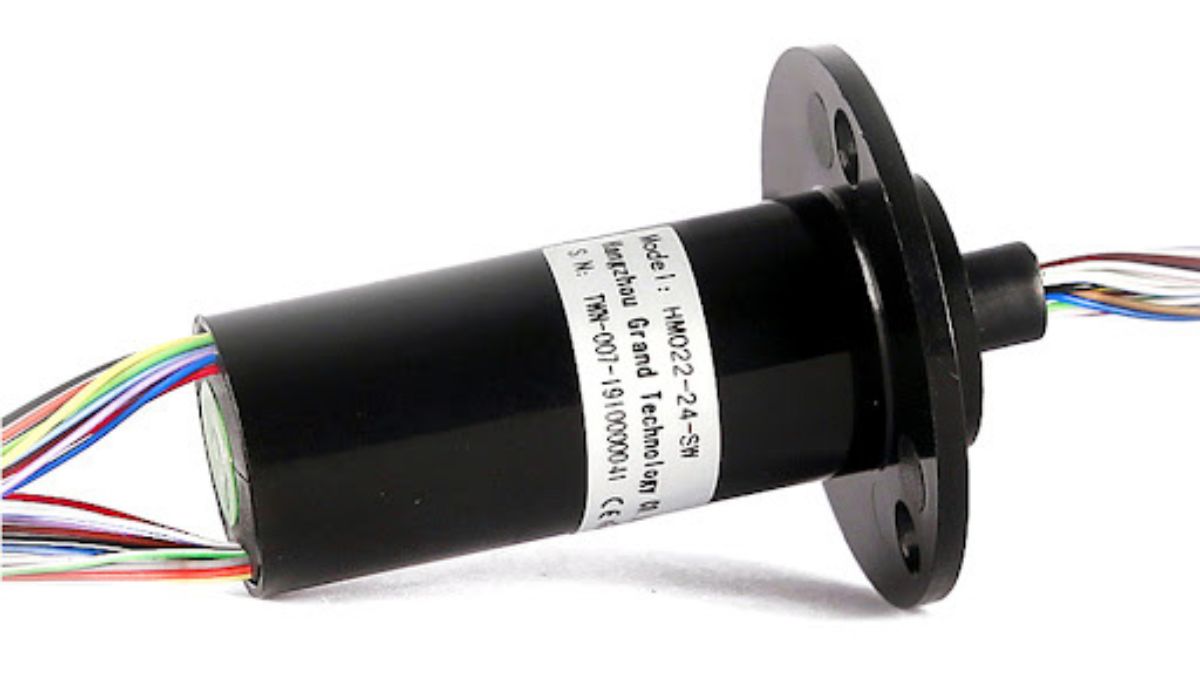Slip rings play a crucial role in enabling the transmission of electrical signals and power between rotating and stationary components in various systems. Whether you’re working on a DIY project or considering commercial-grade solutions, understanding the basics of slip rings is essential. In this article, we will delve into the world of slip rings, specifically focusing on DIY slip rings and capsule slip rings. We will explore their construction, features, applications, and provide insights to help you make informed decisions when choosing the most suitable slip ring option for your project.
What is a DIY Slip Ring?
A DIY slip ring, as the name suggests, is a slip ring that you construct yourself using readily available components. It provides a cost-effective way to incorporate slip ring functionality into your electrical projects. DIY slip rings consist of essential components such as brushes, rings, wires, and insulation materials. They offer the advantage of customization, allowing you to tailor the slip ring to your specific project requirements. DIY slip rings are often favored by electronics enthusiasts and hobbyists due to their affordability and flexibility.
However, it’s important to note that DIY slip rings also have their limitations. They may not match the performance and durability of commercial-grade slip rings. The quality of the components used and the precision of assembly can significantly impact their reliability and functionality. DIY slip rings are best suited for projects where cost-effectiveness and customization are prioritized over stringent performance requirements.
What is a Capsule Slip Ring?
Capsule slip rings, on the other hand, are pre-assembled and compact slip ring units. They are designed for reliable electrical transmission in various industrial and commercial applications. Capsule slip rings offer a plug-and-play solution, with built-in brushes, rings, and insulation within a sealed housing. Their compact size makes them suitable for installations where space is limited. Capsule slip rings are known for their high transmission capacity, durability, and ease of integration.
The advantages of capsule slip rings lie in their reliability and convenience. They are engineered for demanding environments, providing seamless electrical transmission in critical operations. Capsule slip rings find applications in industries such as robotics, packaging machinery, wind turbines, medical devices, and aerospace. They are ideal for projects that require robust performance, long-term reliability, and minimal maintenance.
DIY Slip Ring Construction
If you choose to build a DIY slip ring, the construction process involves several key steps. First, you’ll need to gather the necessary components, including rings, brushes, wires, and insulating materials. Next, you’ll assemble the slip ring by attaching the brushes to a stationary component and connecting the rings to the rotating part. Proper insulation is crucial to prevent electrical short circuits. Careful alignment and balancing of the rings and brushes ensure optimal contact and minimal friction.
It’s important to follow safety precautions during the construction process, such as working in a well-ventilated area, wearing protective gear, and taking measures to prevent accidental electrical shocks. Additionally, thorough testing and inspection should be conducted to ensure the slip ring functions as intended before integrating it into your project.
Capsule Slip Ring Features and Applications
Capsule slip rings offer several notable features that make them desirable for various applications. Their compact size allows for easy installation in confined spaces. Despite their small form factor, capsule slip rings can handle high-speed rotations and transmit multiple electrical signals simultaneously. The sealed housing provides protection against dust, moisture, and other environmental contaminants, making them suitable for demanding conditions.
Capsule slip rings find applications in a wide range of industries. In robotics and automation, they enable continuous electrical connectivity in robot arms, automated conveyors, and industrial control systems. In packaging machinery, capsule slip rings facilitate the seamless transmission of power and signals in rotary indexers, filling machines, and labeling systems. They also play a crucial role in wind turbines, allowing for the transmission of electrical power and signals between rotating blades and the nacelle. Furthermore, capsule slip rings are utilized in medical devices and imaging systems, where precise and uninterrupted electrical transmission is critical for procedures such as MRI scans and robotic surgeries.

DIY Slip Ring vs. Capsule Slip Ring: A Comparison
When deciding between DIY slip rings and capsule slip rings, several factors should be considered. Cost is often a significant consideration. DIY slip rings offer a cost-effective solution since you can source the components individually. On the other hand, capsule slip rings are pre-assembled units, and while they may have a higher upfront cost, they provide reliability and convenience.
Customization is another aspect to consider. DIY slip rings offer the flexibility to tailor the slip ring to your specific project requirements. You have control over the materials used, the number of channels, and other design aspects. Capsule slip rings, while less customizable, are designed to meet industry standards and offer standardized configurations that cater to a wide range of applications.
Performance is a crucial consideration. DIY slip rings may have limitations in terms of signal quality, electrical noise, and rotational smoothness, depending on the quality of components used and the precision of assembly. Capsule slip rings, with their engineered design and quality manufacturing, offer higher performance and reliability.
Factors to Consider When Choosing a Slip Ring
When choosing between DIY slip rings and capsule slip rings, it’s important to consider the specific requirements of your project. Evaluate the complexity of the project, budget constraints, time limitations, and the desired level of performance. DIY slip rings are well-suited for simpler projects where cost-effectiveness and customization are prioritized. Capsule slip rings are recommended for more demanding applications that require robust performance, reliability, and minimal maintenance.
Tips for Successful DIY Slip Ring Projects
If you decide to embark on a DIY slip ring project, here are some tips to ensure success:
- Plan and research: Thoroughly understand the requirements of your project and research the best components and materials for your slip ring construction.
- Quality components: Invest in high-quality brushes, rings, and wires to ensure reliable electrical transmission.
- Precise assembly: Pay attention to the alignment of brushes and rings, as well as the overall balance of the slip ring.
- Insulation and protection: Properly insulate the slip ring to prevent short circuits, and consider adding protective measures such as sealing or shielding to enhance its durability.
- Testing and troubleshooting: Conduct thorough testing of the slip ring before integrating it into your project. Address any issues or inconsistencies that arise during testing.
Real-World Examples of DIY Slip Ring and Capsule Slip Ring Applications
To gain a better understanding of the applications and benefits of DIY slip rings and capsule slip rings, let’s explore some real-world examples:
1. DIY Slip Ring Application: Motorized Camera Gimbal
In a motorized camera gimbal project, a DIY slip ring allows for continuous rotation of the camera while maintaining electrical connectivity for image stabilization and remote control functionality.
2. Capsule Slip Ring Application: Packaging Machinery
In packaging machinery, capsule slip rings enable the seamless transmission of power and signals between rotating and stationary components, facilitating the smooth operation of rotary indexers, filling machines, and labeling systems.
3. DIY Slip Ring Application: DIY Wind Turbine
A DIY slip ring can be utilized in a DIY wind turbine project to transfer electrical power generated by rotating blades to the stationary components, enabling efficient power generation.
4. Capsule Slip Ring Application: Robotics
Capsule slip rings find extensive use in robotics, providing continuous electrical connectivity between stationary and rotating parts in robot arms, automated guided vehicles (AGVs), and industrial control systems.
In conclusion, slip rings play a vital role in enabling seamless electrical transmission between rotating and stationary components in various systems. DIY slip rings offer a cost-effective and customizable solution for electrical projects, allowing enthusiasts to tailor the slip ring to their specific requirements. On the other hand, capsule slip rings provide a convenient and reliable plug-and-play solution, ideal for demanding industrial applications.
When choosing between DIY slip rings and capsule slip rings, factors such as cost, customization, performance, and project requirements should be considered. DIY slip rings are suitable for simpler projects where cost-effectiveness and customization are prioritized. Capsule slip rings excel in more complex applications that require high performance, reliability, and minimal maintenance.
By understanding the basics of DIY slip rings and capsule slip rings, you can make informed decisions and choose the most suitable slip ring option for your specific project needs. Whether you decide to embark on a DIY slip ring construction or opt for a pre-assembled capsule slip ring, proper construction, installation, and usage are essential for optimal performance. So, take the time to plan, research, and follow best practices to ensure success in your slip ring endeavors.











